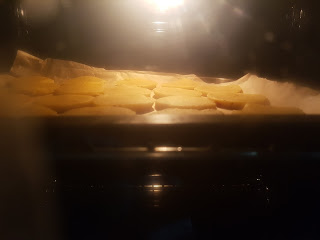Aaharam - A Tamil word which means MEAL used by the Brahmin community.
"Aaharam Aacha " means " Have you had your meal" ?
As the word is from Tamil ; let's see few interesting details about Tamil (Brahmin) cuisine.
Tamil Nadu (To be pronounced as Tamizh Nadu) is one of the 28th states of India. It lies in the southern part of India. It was known as 'Madras Presidency' till 1968. It's the eleventh largest state in India by area. The region has been the home for Tamil civilization since atleast 1500BC. The state's classical language Tamil has been in use & contributed in literature for the past 2500 years.
Like any other Indian state Tamil Nadu is also well known for it's hospitality & it's deep belief that " Serving food to others is a service to humanity
Tamil cuisine is basically South Indian cuisine , where Rice & Rice derived dishes from the major portion a diet. There are regional sub varieties namely
Chettinad, Kongunadu, Madurai, Tirunelveli , etc.... Traditionally food is served on a banana leaf instead of a plate & eaten with right hand. The
Chettinad region is famous for its spicy non-vegetarian delicacies , while
Ambur,
Dindugal and
Sankarankovil are known for their
Biriyani.
A common person from the Tamil community starts his/ her day after bathing, praying god & then have their breakfast. There are still families who do not enter kitchen before bathing & they only allow family members inside the kitchen. This is just to make sure that the kitchen is hygiene & safe.
Breakfast normally consists of
Idly, Dosai, Pongal, Poori, Vadai, Puttu, Paniyaram, Aappam, Idiappam, uppuma, etc... with an accompaniment of
Chutneys, Sambhar, Spiced powder (called as Milagaai podi- Chilli powder; made with dried red chillies & lentils). As Rice is the staple diet most of the dishes are based on Rice.
Lunch At home ; consists of following items: Rice with Sambhar (with or with out Ghee) followed by Rasam & then curd or buttermilk with an accompaniment of a vegetable (dry preparation called 'Porial'), vegetable (a semi gravy item called 'Kootu'), Pickle ( known as 'oorukai')& Appalam (Pappadums)
Non Vegetarian meal consits of the above menitoned items with an addition of Chicken or Fish or Mutton or Egg (can be made of a dry or a gravy preparation)
Majority of the people don't eat Beef or Pork dishes due to religious reasons.
Dinner will be similar to Lunch or Breakfast items
Tamil wedding feast Traditional Tamil wedding meal is always a table service; where friends & families sit in a row & the waiters serve the food in order. Any request of second service will be happily served.
The wedding lunch is served on a Banana leaf & the elaborated menu items are served in the following order.
Sweet (as Payasam), Thair pachadi, Pickle, Salt, Lentil salad, Vadai, Sweet pachadi, Appalam, couple of vegetable dishes, Boiled rice with Ghee. Sambhar, Mohr Kuzhambhu, Rasam are the traditional gravy items which accompanies the rice followed by curd / buttermilk to cool the appetite. This delicious meal compliments the appetite with mouth watering sweet dishes sucha as Payasam/ Badam Kheer or Mysore pak. The items may vary depending on the financial background of the families.
After the meal is over , there'll be a tray of Betel leaf/ nuts which aids in digestion.
Few Tamil culinary terminology absorbed in English* The word "Curry" is an anglicization of the Tamil word "Kari"
* The Tamil phrase "Milagu Thaneer" (Pepper soup), literally Pepper water , been
adapted in English as "Mulligatawny"
* The word "Mango" is derived from the Tamil word " Maangai"
* The word "Rice" may have ultimately derived from the Tamil word "Arisi"


















 . Place the pan on the stove &
. Place the pan on the stove & 





 I personally like to use the traditional iron pan. Care should be taken before making paniyarams. Such as making sure the pan is not rust. Clean it properly, wipe it with a dry cloth & apply little bit of oil , wipe it again & then store. If the paniyaaram doesn't comes out off the pan then heat the pan , add some chopped onion; allow them to cook for a while. Alternatively beat an egg & pour it in the mould along with oil & wipe it off clean & then restart the process.
I personally like to use the traditional iron pan. Care should be taken before making paniyarams. Such as making sure the pan is not rust. Clean it properly, wipe it with a dry cloth & apply little bit of oil , wipe it again & then store. If the paniyaaram doesn't comes out off the pan then heat the pan , add some chopped onion; allow them to cook for a while. Alternatively beat an egg & pour it in the mould along with oil & wipe it off clean & then restart the process.